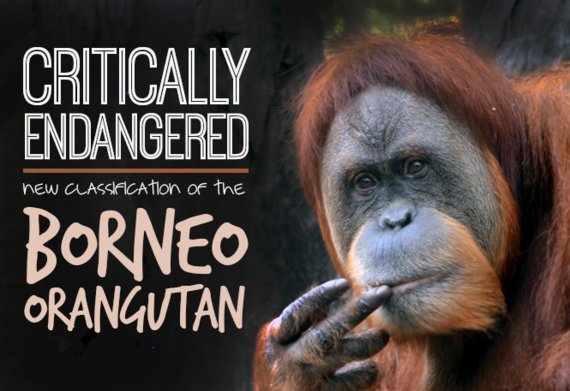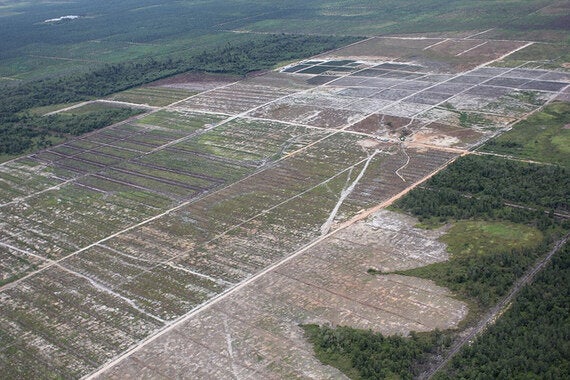
Yet another one of the world's most incredible species is now critically endangered according to the International Union for Nature Conservation's (IUCN) latest assessment. Having now joined their Sumatran cousins on the list, the issues causing their degradation have been brought into the spotlight once more.
The Bornean Orangutan ranges across all but the South of the Indonesian Kalimantan Provinces as well as the Malaysian states of Sabah and Sarawak. Despite this vast range their distribution within it is incredibly sporadic. This is due to their preference of low altitude forests and the impassable Padas and Rejang rivers that split the forests up.
Already existing in pretty niche conditions, their level of Prime and Suitable habitat has been in rapid decline since 1973, so they really are caught between a rock and hard place!

Between 1973 and 2010 it was found that 98,730km2 of Prime habitat was lost through logging, natural forest fires, and Palm Oil plantation. On top of this, between 2010 and 2025 an estimated 57,140km2 of suitable habitat is to be converted into plantation. This means that around 60% of total orangutan habitat will be gone by 2025, and will leave the remainder so fragmented and degraded they won't be able to cope.
Deforestation is but one of the factors affecting this species. Many are killed due to illegal hunting; not only for their meat, but also if the orangutans are in the way of the creation of these vast Palm Oil monocultures.
More than 50% of the current population has already been lost over the past 40 years due to these pressures, with 2000 to 3000 individuals killed every year; meaning somewhere between 44,170 and 66,570 individuals are already gone!
A national lack of awareness on the issue isn't helping either, with 27% of the people in Kalimantan not knowing that orangutans are protected by law. Although the species is fully protected it appears much of their habitat is not, and this is where the problem lies. In this case, the legislation protecting the species fails to account for the animal's surrounding ecology.
Currently 80% of the Kalimantan and 20% of the Sabah forests are still unprotected, giving easier access for unsustainable timber extraction and agriculture.
The total estimated population of Bornean Orangutans in 1973 was 288,500 and, if we continue on this path of destruction, is projected to decline to just 47,000 by 2025. So how can we ensure their survival?
Indonesian and Malaysian governments need to seriously crack down on existing illegal logging and hunting, and need to introduce new long-term, widespread implementation of protective legislation. These protective measures would not only reinforce the species' protection, but also consider efficiently enforced, common protection of orangutan habitat, with all future commercial pursuits geared towards sustainability. Hopefully this new assessment will be the driving force behind such measures.
By Thomas Phillips - Online Journalism Intern
Frontier runs conservation, development, teaching and adventure travel projects in over 50 countries worldwide - so join us and explore the world!
If you would like to get involved see our current Orangutan Projects
